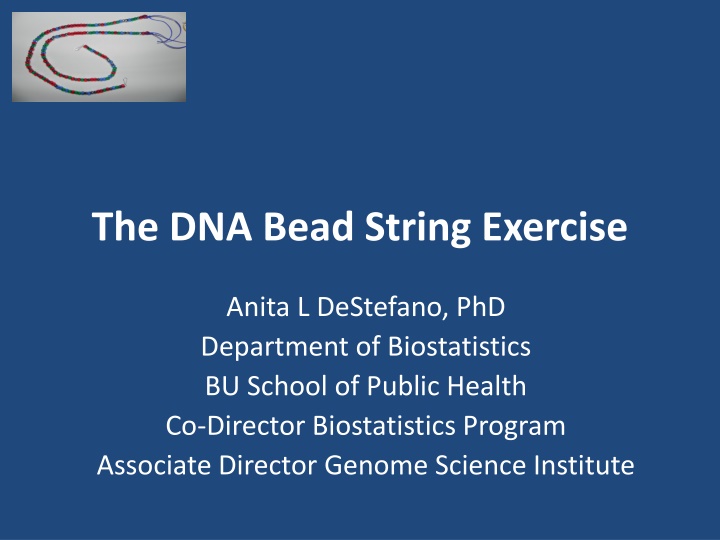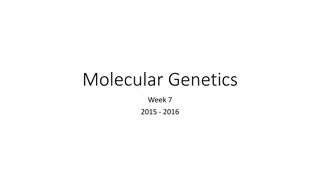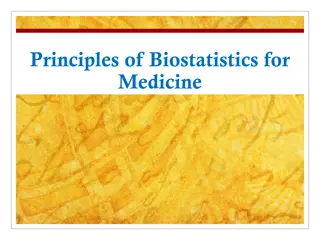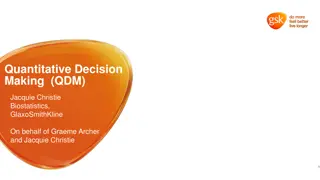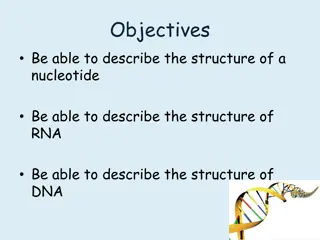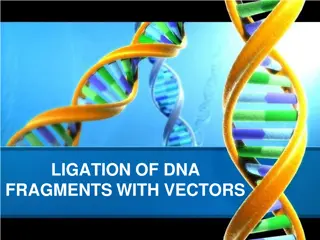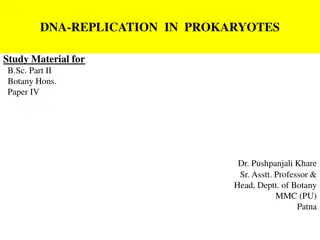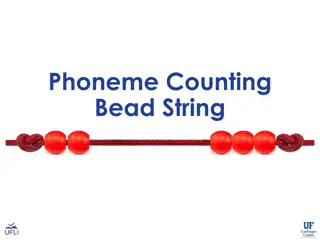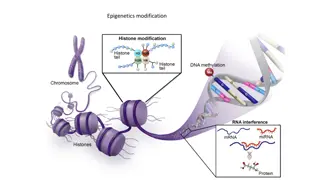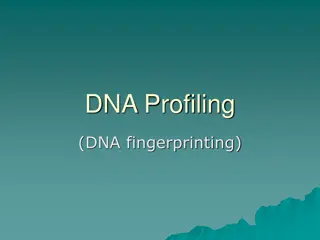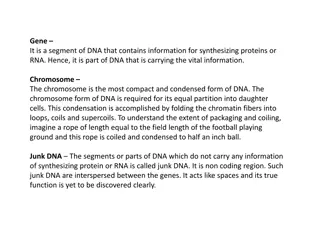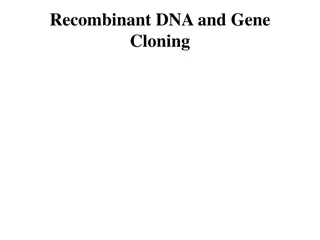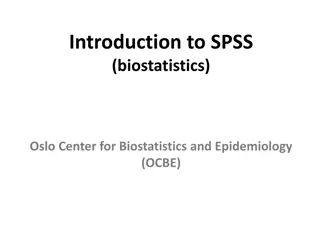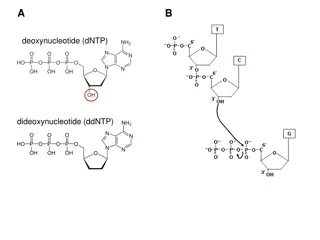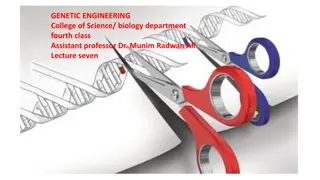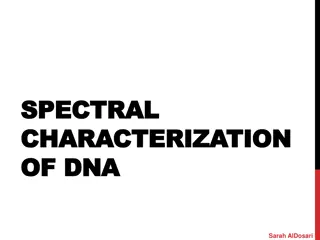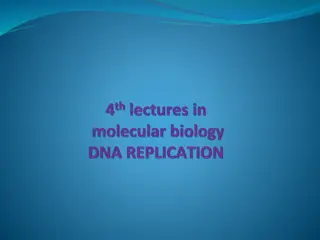Innovative DNA Bead String Exercise for Biostatistics Learning
Explore the hands-on DNA Bead String Exercise designed by Dr. Anita L. DeStefano to engage students in biostatistics education. The exercise aims to bridge genetic and statistical concepts, allowing students of varying backgrounds to interact, analyze DNA, and understand key genetic elements without a traditional lab setting. Through activities like counting M&M colors to assess statistical distribution, students gain practical insights into genetic data analysis and variation identification in the human genome.
Download Presentation

Please find below an Image/Link to download the presentation.
The content on the website is provided AS IS for your information and personal use only. It may not be sold, licensed, or shared on other websites without obtaining consent from the author.If you encounter any issues during the download, it is possible that the publisher has removed the file from their server.
You are allowed to download the files provided on this website for personal or commercial use, subject to the condition that they are used lawfully. All files are the property of their respective owners.
The content on the website is provided AS IS for your information and personal use only. It may not be sold, licensed, or shared on other websites without obtaining consent from the author.
E N D
Presentation Transcript
The DNA Bead String Exercise Anita L DeStefano, PhD Department of Biostatistics BU School of Public Health Co-Director Biostatistics Program Associate Director Genome Science Institute
Innovation Inspiration National Heart Lung and Blood Institute (NHLBI) funded Summer Institute in Training in Biostatistics (SIBS) 6 week intensive summer course for undergraduates Addressing dearth of Biostatisticians
Innovation Inspiration Modules in Biostatistics Epidemiology Clinical Trials Statistical Genetics
Innovation Inspiration Lisa Sullivan, Chair Department of Biostatistics Associate Dean of Education, SPH Metcalf Award Winner Modules in Biostatistics Epidemiology Clinical Trials Statistical Genetics Wayne LaMorte, Assistant Dean of Education, SPH Presenting later today Me
Innovation Inspiration Need to keep up with excellent faculty Hands on activities Counting M&M colors to assess statistical distribution I teach the last week Even highly motivated students start to wane a bit
Innovation Inspiration Statistical Genetics Application of statistical tests to genetic data Often to identify variation in the human genome that confers risk for disease Requires understanding of both the statistical and genetic concepts SIBS students have varying background in biology and genetics
How do I Provide a hands on way to see DNA? Show students how DNA is analyzed without taking them into a lab? Bring students of varying background to the same level Cover both genetic and statistical concepts? Have students interact with each other? Have students interact with me?
DNA Bead Exercise In the laboratory can examine a small segment of DNA and characterize Recreated a small DNA segment with beads incorporating key genetic concepts Non-coding region Promoter region Coding region Restriction enzyme cut site Tetranucleotide repeat Single Nucleotide Polymorphism (SNP: missense) Carefully constructed to incorporate statistical concepts Disease association Linkage disequilibrium
promoter region codons ECOR1 cut site ATGC String color indicates disease status ECOR1 cut site GATA repeat
DNA Bead Exercise: Implementation Randomly hand out bead strings to student Half blue strings (unaffected with disease) Half yellow strings (affected with disease) Students must pair based on same string color Characterize their individual Affected/Unaffected with disease Length of DNA segment (based on GATA repeats) Presence or Absence of ECOR1 cut site Amino Acid sequence Aggregate data across the class
promoter region codons ECOR1 cut site ATGC String color indicates disease status ECOR1 cut site GATA repeat
DNA Bead Exercise: Implementation Table 1. Allele Frequencies based on 12 individuals (24 chromosomes) Allele varies by number of GATA repeats) 80 84 88 (Length of Bead String: 92 96 Affected 2 1 4 2 3 Unaffected 1 2 3 3 3 Discuss correct statistical test No association with disease status
DNA Bead Exercise: Implementation Create similar tables for other genetic characteristics Association between presence/absence of ECOR1 cut site and disease status Stronger association between amino acid change and disease status Correlation between the ECOR1 cut site and amino acid change Linkage disequilibrium
DNA Bead Exercise: Implementation Exercise used in Summer Institute for Training in Biostatistics (undergraduates) SPH BS858 Statistical Genetics I (graduate students) Upward Bound (high school students) Well received by students Helps achieve learning objectives Could be adapted for your course in genetics, medical genetics, population genetics, bioinformatics
